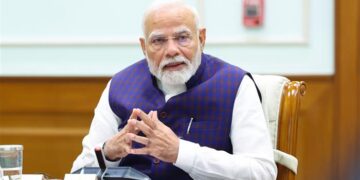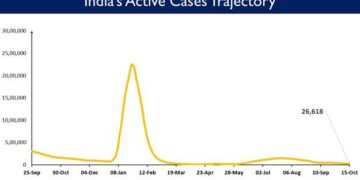Despite persistent challenges such as tariffs and protectionist policies, India and the United States have set an ambitious goal of reaching $500 billion in bilateral commerce, with an emphasis on high-growth industries such as semiconductors, electronics, and key technologies, industry analysts said on Friday.
Following Prime Minister Narendra Modi’s meeting with US President Donald Trump, India and the United States renewed their commitment to the relationship as critical to global peace and development.
According to Ashok Chandak, President of the India Electronics and Semiconductor Association (IESA), this collaboration has grown to be one of the most crucial in the twenty-first century, meeting strategic, economic, and technological concerns.
Building on the iCET (Initiative on Critical and Emerging Technologies) framework, the partnership will encourage the use of cutting-edge technologies in defense and artificial intelligence (AI), semiconductors and quantum computing, as well as biotechnology, energy, and space exploration.
The establishment of the INDUS Innovation Bridge, modeled after the successful INDUS-X platform, will stimulate deeper academic and industrial collaboration between the United States and India.
This project aims to increase investment in space, energy, and emerging technologies, allowing both countries to maintain their innovation leadership to fulfill 21st-century requirements.
The US-India TRUST (Transforming the Relationship Utilizing Strategic Technology) program emphasizes the potential for large-scale US-origin AI infrastructure deployment in India, overcoming export control issues while also providing access to cutting-edge technology.
According to Chandak, this will allow Indian enterprises to contribute to global AI ecosystems.
The symposium emphasized the significance of research, development, and investment throughout the vital mineral value chain in satisfying the demands of rising sectors such as semiconductors.
Furthermore, the US-India collaboration on energy affordability, reliability, and sustainability would aid India’s expansion of solar energy markets, albeit tariff concerns must be addressed.
Major decisions were also made to bolster India’s defense infrastructure, including technology transfers and collaboration on modern military systems, which increased India’s strategic autonomy.
Experts believe that the India-US alliance, which shares a dedication to innovation, economic growth, and global security, is positioned to offer breakthrough achievements in industries such as semiconductors and technology.
Source: IANS







 Finance
Finance







